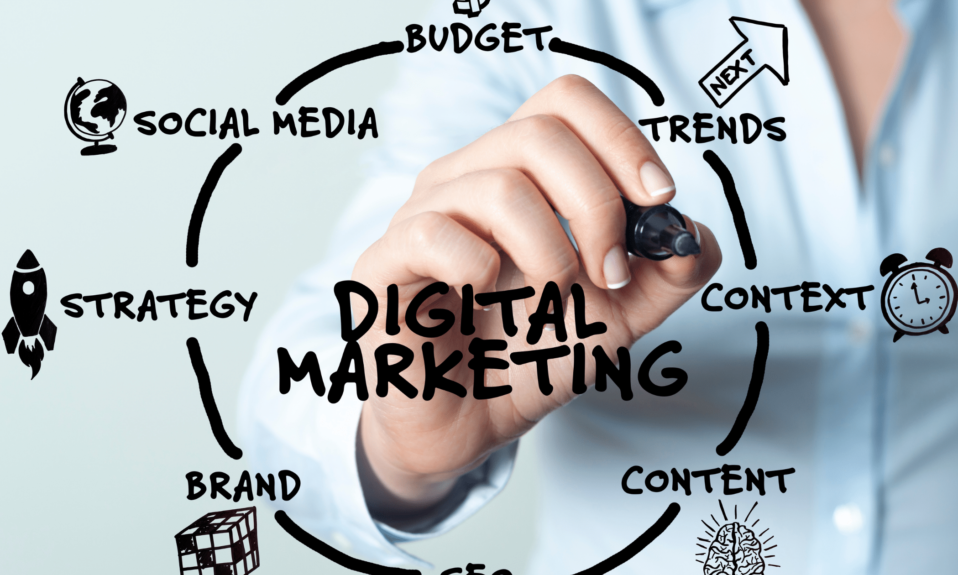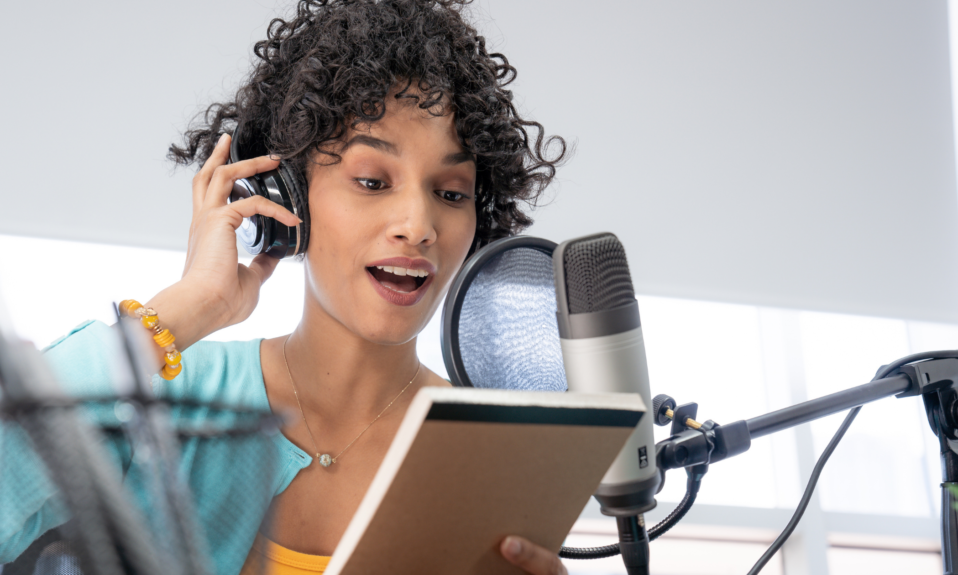
2019 was the first year where more than half of the world had access to the internet. This increase in internet availability has accompanied by an increase in the usage of computers, laptops, and smartphones.
As a result, we have seen remarkable growth in digital channels, and India, with its high population and tremendous technological advancements, has transformed this medium into a full-blown market. According to digital marketing stats, the digital marketing and advertising industry in India Is currently growing at an annual rate of 25-30%.
- Digital Marketing Growth Statistics in India
- Digital Marketing Industry Statistics and Trends–2021
- SEO Statistics
- Content Marketing Statistics
- Email Marketing Statistics
- Social Media Marketing Statistics:
- Mobile Marketing Statistics
- Display Advertising Statistics
- Video Marketing Statistics
- Digital Marketing vs. Traditional Marketing Statistics
- Traditional marketing: by the Numbers
Digital Marketing Growth Statistics in India
Digital advertising growth revenue in India
The 2020 revenue for digital advertising in India amounted to $199 billion INR, up from $160 billion INR during 2019, an increase of over 24%. The expected digital advertising revenue for the year 2021 is expected to be around $223 billion INR.
The major reasons for this evolution of advertising in India and the rise in revenue are the increase in speed and affordable internet, along with a growth in the consumption of vernacular content. Cash-flushed industries such as insurance and banking are trying out their hands at non-traditional platforms like Instagram and YouTube to establish greater connections with their users.
The market size of the digital advertising industry across India increased by 31.25%
The market size of the digital advertising industry across the country for the FY 2020 was $210 billion INR, up from $160 billion INR in 2019, an increase of 31.25%. The market size is expected to go up to $266 billion INR by the end of FY 2021. Social media leads the way in digital advertising expenditures, with a share of 28%.
Once again, the easy access to high-quality internet is the major reason for this upsurge, enabling greater percentages of the population to gain access to digital advertisements and platforms.
Between 2016 and 2019, there was an eightfold increase in the number of Indian internet users
In 2016, India had 69 million internet users. By December 2019, this number had gone up to 560 million.
The main credit for this stark increase goes to the Digital India advent, which started in 2015. This initiative should increase digital empowerment by improving the online infrastructure. As a result, there has been a rapid rise in digital startups and services over the past three to four years, leading to an increase in internet users, social media traffic, mobile connections, and more.
Digital Marketing Industry Statistics and Trends–2021
On average, companies that blog get 55% more traffic.
It is unsurprising to see that blogging leads to more traffic. Fresh, informative, and engaging blogs are an excellent way to keep your website visitors interested and curious. From a visitor’s viewpoint, blogs also reflect an effort on the company’s part to ensure engagement and interaction.
57% of companies have gained a customer through their company blog.
Once again, this stat reflects the importance of blogs in digital marketing. A company that regularly updates its blogs is credible by customers, increasing the likelihood of a purchase.
78% of internet users conduct online product research.
The internet is the biggest research tool on offer, these days. Hence, it is normal to see customers wanting to access this tool to get as much information about a product as possible before deciding whether to purchase.
SEO Statistics
High-quality content can increase blog traffic by up to 2000%.
Great content helps companies gain credibility with search engines and earn the top spots in search results. Good content is crucial in attracting the right type of audience to your website. According to a Backlinko study, the number of domains linking to a page was the factor that had the highest correlation with rankings in Google.
However, over 55% of all pages have no backlinks pointing back to them.
How many links point back to your website is a crucial factor in determining domain authority. So, the higher the number and quality of your backlinks, the greater your domain authority. However, just over half of all pages are currently exploiting this arena.
Compared to short articles, long articles receive 77.2% additional backlinks.
This is one of the major reasons that companies are laying greater emphasis on producing long-form content. Other benefits include higher search engine rankings and online visibility.
Content Marketing Statistics
As far as content effectiveness goes, audience relevance is the number one factor at 58%, but strong storytelling stands at a close second with 57%.
Audience relevance is the most important factor in attracting and keeping audiences for your website. However, almost just as important is to keep the viewers’ attention through interesting storytelling.
63% of marketers are developing content while keeping buyer persona as their priority.
Buyer persona is a detailed description of your potential buyer (s). Prioritizing buyer persona enables businesses to empathize and understand their customers and ultimately serve them in a better way.
45% of marketers believe that interactive content is very or extremely effective. Examples of interactive content are contests, quizzes, calculators, and assessments.
Some benefits of interactive content include higher engagement rates and greater brand loyalty. Quizzes, assessments, and calculators allow you to collect data that is highly accurate and relevant.
Email Marketing Statistics
Your biggest chance of getting a healthy open rate is if you email on Tuesdays.
By the start of Tuesday, many people have gotten over their ‘Monday blues’ and are ready to take on the new week–and open their emails.
The chances of recipients opening an email go up by 82% if the email is a component of a segmented campaign, compared to if it is a traditional email.
This is because segmented emails enhance the sender’s reputation and take a personalized approach towards email marketing.
Out of all brands that used emojis, 56% had a better open rate compared to their non-emojis using counterparts.
However, emoji used went up by 775% between 2015 and 2016, which might lead to a reader burnout soon.
Using video content in emails can boost click-through rates by 300%.
A correctly crafted video can enable the user to connect to what they are watching. Video marketing presents you with the opportunity to showcase important features of their business in a fun and interactive way.
Social Media Marketing Statistics:
Of all online shoppers, 64% claim that they used social media to help make a buying decision.
A business’ social media page allows users to go through the constant feed of products. A strong feed is a crucial role in attracting recent visitors and converting them into customers.
Compared to 2019, users spent 26 minutes more on their mobile devices during 2020. This number is expected to go up by another 5 minutes during the year 2021.
The drastic increase between 2019 and 2020 is mainly down to the pandemic and the lockdowns that followed. Since many people will continue to work from home during 2021, we can expect another slight increase in mobile phone usage.
Out of all women, 86% will visit social media prior to making a purchase.
The major reason for this high number is increased social media activity for women compared to in previous years, and greater availability of smartphones and easier access to online information.
Out of all users, 78% claim that they will skip a video that plays an ad prior to the content.
Users ignore any content that is not relevant, and when users get to see that irrelevant content before the promised relevant material, they are likely to skip both.
Mobile Marketing Statistics
Advertisers and marketers are dedicating 13.5% of their budgets towards mobile advertisements.
Since a large portion of content is accessed on social media (see the next stat), it is natural for advertisers and marketers to dedicate significant amounts of money towards mobile advertisements.
69% of all media is being accessed on smartphones.
Since people are spending a lot more time on their smartphones than on other devices, it is unsurprising to witness that most media is being accessed through smartphones.
57% of mobile users claim they will not recommend businesses with unresponsive or poorly designed websites.
Your website is often the first impression that you make on customers. They will use your website to form an opinion about your business and its products or services.
Out of all smartphone owners, 69% will reach for it as soon as they wake up.
By going through any overnight messages or notifications, people want to get a jumpstart on the day. Marketers can use this behavior to their benefit.
Display Advertising Statistics
Global display advertising is expected to grow by 18.5% during 2021.
The COVID-19 pandemic has seen a tremendous rise in online businesses and marketing. The trend is expected to continue during the new year.
During the first half of the year 2020, views on mobile phones increased further and handled 55.7% of total ad views. During June, 58.2% of all advertisements were presented to mobile devices.
Once again, we have the coronavirus pandemic to thank. The increased mobile phone usage during lockdowns led to an increase in ads viewed on smartphones.
Across industries, only 14% of the total volume of all display advertising in 2019 used a data feed.
This is an astonishing stat, considering that it is extremely easy to set up and use a data feed.
Video Marketing Statistics
During 2020, 85% of all users in the United States watched monthly online video content on any of their devices.
The popularity of video content is increasing. Marketers and advertisers should take advantage of this increase in video consumption.
54% of consumers want to see more video content from a brand or business they support.
Users are not only consuming more video content but also demanding more. Businesses should keep this in mind while forming their marketing strategies.
88% of video marketers are satisfied with the ROI of their social media video marketing efforts.
Companies are using video marketing to increase sales, build brand awareness, and keep their customers informed.
Video marketers get 66% more leads per year, compared to marketers who do not use video content.
This increased number of leads could be down to the quality of consumer education and awareness that comes with video marketing.
Digital Marketing vs. Traditional Marketing Statistics
70% of consumers learn about products through content as opposed to traditional methods.
Online content is more interactive, personalized, and easier to access compared to traditional marketing material. Also, as we mentioned earlier, customers prefer getting their product information through the internet.
Of all consumers searching online for local businesses, 72% visit stores within a five-mile range.
This stat reflects the importance for local businesses to have an online presence. Since more and more customers are looking up physical stores over the internet, online visibility is crucial for increasing sales and customers.
64% of consumers say that watching a marketing video on Facebook has influenced their purchase decisions.
Facebook is perhaps the biggest social media platform around the world. Owing to the large number of users, many businesses promote their products on Facebook.
Traditional marketing: by the Numbers
79% of households say that they read or scan a direct mail advertisement.
This shows that direct email marketing is far from dead. A lot of consumers still prefer going through mail advertisements, and it is a marketing method businesses should not ignore that.
39% of customers say that they try a business for the first time because of direct mail advertising.
This stat extends the previous one. It shows that almost half of all users who scan or read direct mail advertisements, end up trying a new business.
56% of customers find print marketing to be the most trustworthy type of marketing.
Despite all the popularity, contemporary marketing methods are not seen as reliable by everyone. Marketers should have a hybrid marketing strategy that makes use of both traditional and newer marketing approaches.
Conversion Optimization Stats
For an average website, the conversion rate is approximately 2.35%.
However, companies having the top 10% conversion optimization observe 3-5 times better rates than average.
A Facebook advertisement has a conversion rate of 9.21%.
A Facebook advertisement has a conversion rate that is approximately four times higher than average. This reflects the importance of Facebook for marketing.
Companies see a 55% increase in leads when increasing their number of landing pages from 10 to 15.
A landing page that supports your business vision, goals, and objectives is crucial for increasing leads and customers. Landing pages can develop credibility and inform potential customers about your products or services.
Out of all visitors claiming that they read the headlines, 90% also went through the CTA.
Almost all visitors who read the headlines also read the call-to-action. This shows the importance of writing an effective CTA copy.
Even a 1-second delay in page load time can cause a 7% reduction in conversions.
This stat reflects how crucial it is to have a properly functioning website. Today’s customer has a very low patience threshold, and as shown, even a wait of one additional second can make them turn to a competitor with a quicker website.
Lead Generation Statistics
According to 85% B2B marketers, lead generation is their top goal for content marketing.
Lead generation has a range of benefits for businesses. It helps to spread awareness, increase sales, and target desired customers.
Out of all B2B professionals, 68% believe that improving lead quality is the most important objective. Improving lead volume stands at second place with 55%.
As we mentioned, lead generation has many benefits for organizations. It is, therefore, not surprising to see B2B professionals prioritizing lead quality and volume.
Out of all B2B marketers, 61% believe that the generation of quality leads is an enormous challenge.
Landing Pages Statistics
Out of all agencies and companies using landing pages, only 52% test them to look for ways to increase conversions.
This is another surprising stat, considering the importance of landing pages for conversions. More companies and agencies need to test their landing pages to find potential routes for increasing conversion.
Compared to above-the-field call-to-action, longer landing pages can increase leads by up to 220%.
However, this is not a one-size-fits-all approach, and only through testing will you be able to tell what works best for you.
48% of marketers build a new landing page for each marketing campaign.
The more your number of landing pages, the more updates and social posts you and your team can create. The higher the amount of traffic to the landing pages, higher the number of conversions.
Omni channel Marketing Statistics
Businesses adopting omnichannel strategies achieve 91% higher yearly customer retention rates than their counterparts that do not use omnichannel strategies.
Of course, customers prefer sticking to companies that provide them with multiple methods of purchasing, paying, and accessing promotional material.
15 years ago, an average customer would have used just two touchpoints while purchasing an item, and only 7% of customers would have routinely used over four touchpoints. Today, an average consumer will use six touchpoints and over half of all customers will use over four.
This comprehensive statistic shows how important it is for businesses to adopt omni channel marketing strategies–businesses that cannot do so will eventually leave behind.
64% of customers believe they should get real-time help on every customer service channel.
This stat emphasizes the fact that merely having an omni channel presence is not sufficient. Companies need to ensure that they are effectively assisting their customers across every channel.
According to 64% of marketers, lack of investment and resources are their biggest barriers to omnichannel marketing.
Omni channel marketing can prove costly and demanding. However, as the next stat will show you, it is worth it in the long run.
Compared to customers who buy through just one channel, omnichannel shoppers brag a 30% greater lifetime value.
As we mentioned, omni channel marketing strategies pay in the long run.
Digital Advertising Spends in India
The Marketing trends in India suggest that the industry for digital advertising in India is expected to grow by 280.49 billion INR by the end of 2022.
This increase is mainly down to the enormous increase in the number of internet users and the tremendous technological advancements in the country.
With 27%, the FMCG industry in India accounts for the most digital media spending.
More and more Indian consumers are now buying FMCG (Fast Moving Consumer Goods) online. This means that FMCG companies can now tie back digital marketing results to an immediate ROI.
Social media dominates the share of digital media advertising for both desktop (29%) and mobile (27%).
A lot of time that consumers spend online is on social media. For this reason, marketers prioritize social media for digital media advertising.
Conclusion
In summary, this article tried to put forth several digital marketing stats, including those of the digital advertising industry in India, which is not only one of the most populous countries in the world, but is also turning into a global technological hub. We hope that the numbers and insights discussed in this article will help business owners in their digital marketing visions, plans, and strategies.
Sources
- https://www.statista.com/statistics/233493/digital-advertising-revenue-in-india-from-2011/
- https://www.statista.com/statistics/262966/number-of-internet-users-in-selected-countries/
- https://wpforms.com/digital-marketing-statistics/
- https://blucactus.blue/seo-stats/
- https://businesscentre.yp.ca/-/how-to-choose-the-right-content-format-for-your-audience
- https://www.stephenzoeller.com/buyer-persona-research-insight/
- https://www.hebergementwebs.com/marketing/21-interactive-content-stats-marketers-need-to-know-in-2020
- https://www.campaignmonitor.com/blog/email-marketing/2018/12/70-email-marketing-stats-you-need-to-know/
- https://content.myemma.com/blog/the-truth-about-using-emojis-in-email-subject-lines
- https://www.campaignmonitor.com/blog/email-marketing/2020/02/surprising-video-email-marketing-statistics/
- https://www.socialbakers.com/blog/21-data-points-for-2021
- https://retailtouchpoints.com/topics/digital-marketing/social-media-marketing/86-of-women-more-likely-to-make-a-first-purchase-after-social-media-engagement
- https://www.marketingcharts.com/digital/mobile-phone-112162
- https://marketingland.com/mobile-now-accounts-nearly-70-digital-media-time-comscore-210094
- https://www.sweor.com/firstimpressions
- https://www.slicktext.com/blog/2019/10/smartphone-addiction-statistics/
- https://www.bannerflow.com/blog/display-advertising-trends-2020/
- https://www.oberlo.com/blog/video-marketing-statistics
- https://contentmarketinginstitute.com/wp-content/uploads/2016/01/NEOMG_Whitepaper_final_11-10-15_lk.pdf
- https://junto.digital/blog/seo-stats/#:~:text=72%25%20of%20consumers%20who%20perform,Click%20to%20Tweet%20this!
- https://animoto.com/blog/business/state-of-social-video-marketing-infographic
- https://www.informationpackaging.ca/blog/10-print-marketing-statistics-you-should-know/
- https://www.usdatacorporation.com/blog/marketing-101-what-is-direct-marketing/
- https://webstrategies.com/print-marketing-statistics/
- https://transaction.agency/ecommerce-statistics/everything-you-know-about-conversion-rate-optimization-is-wrong/
- https://www.wordstream.com/blog/ws/2017/02/28/facebook-advertising-benchmarks
- https://blog.wishpond.com/post/89066037410/how-many-landing-pages-do-i-need-on-my-website
- https://klientboost.com/marketing/call-to-action-examples/
- https://wemakewebsites.com/blog/improve-page-load-speed-increase-conversion/
- https://www.seosandwitch.com/digital-marketing-in-india/
- https://voyado.com/blog/why-omni-channel-is-important/
- https://v12data.com/blog/25-amazing-omnichannel-statistics-every-marketer-should-know/
- https://www.esageit.com/digital-advertising-spends-in-india-2020-chapter/




